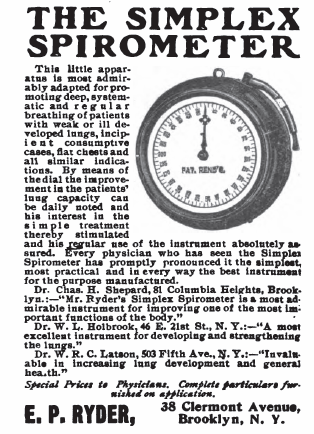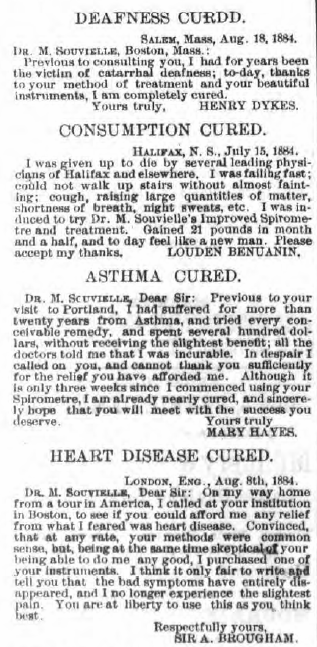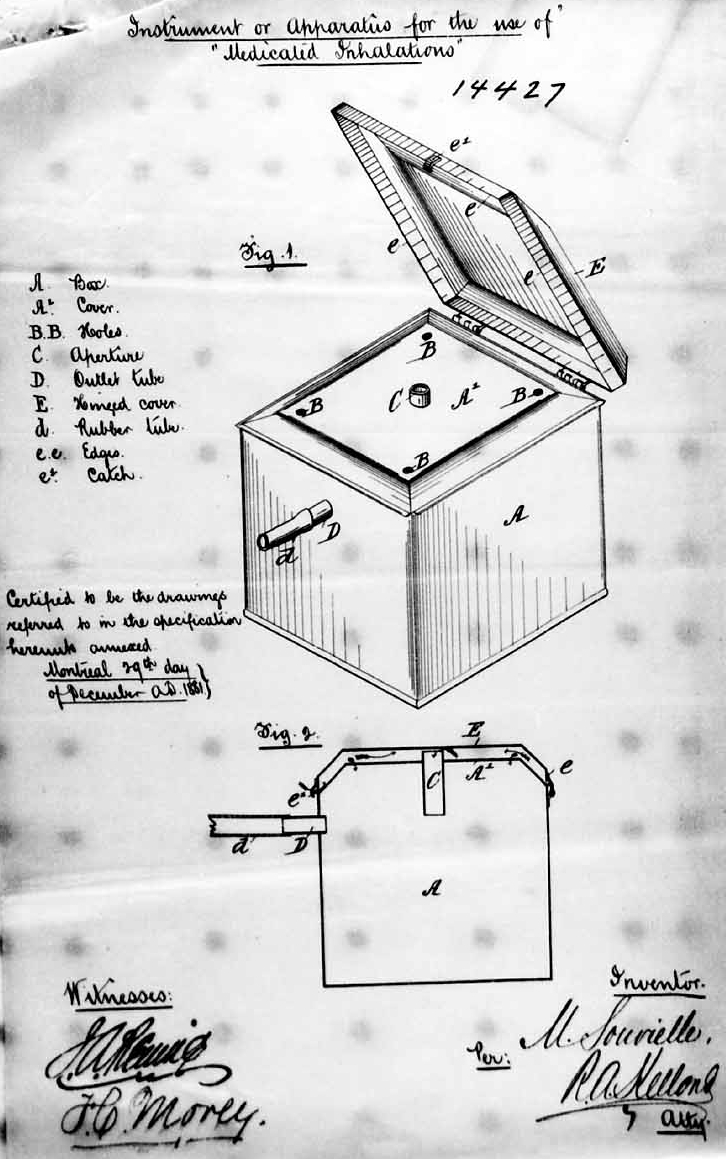The beginning of pulmonary function testing can best be dated to 1846 when John Hutchinson invented the spirometer. Although similar devices had been used by previous scientists he turned it into a precision instrument and approached the study of lung function systematically. His work inspired innumerable other researchers and inventors, and within a few years improved versions of his spirometer were appearing across Europe and America. By my count within twenty years there were at least four other methods for measuring expiratory volume (at least one of which is still in use) had been applied to a new generation of spirometers.
The initial focus of spirometry was entirely on exhaled volume and the use of spirometers for any other purpose did not begin to change until the 1930’s when the MVV test was proposed and formalized. During this time the accuracy of spirometers improved and many serious researchers laid the groundwork for our current understanding of pulmonary medicine and physiology. This was also a period of time in which what we now call quack medicine flourished. A quick glance in almost any of the newspapers or magazines of that time will show a variety of ads extolling the virtues of different medicines, treatments and devices, most of which now appear to be silly, ineffective or just plain dangerous. As much as we might like to ignore or belittle this sordid period in our medical history, the truth is that spirometers were also one of these quack medicine devices.
The longest-lived one of these was the Barnes Spirometer which was first invented in 1865 by Aaron P. Barnes.
A description from 1866: “The Lung Tester of A.P. Barnes (to be had of Messrs. Codman & Shurtleff, Boston) is the simplest and cheapest of all spirometric instruments. It consists of a cylindrical bag of India-rubber cloth, closed at each extremity by a disk of wood, and furnished with two metallic tubes; one tube enters laterally at the bottom, and is about three inches long; the other, vertical, is about twelve inches long, and graduated, and inserted in the centre of the upper disk. A flexible tube of proper length, with a mouthpiece is stretched over the outer aperture of the lower metal tube, and through this a forced expiration is made; the expired air fills, more or less, the bag and the vital capacity is recorded on the upper tube, which is forced up as the bag expands. The bag is enclosed in a tin cylinder, shut at both ends with two holes for the tubes.”
It was, needless to say, not terribly accurate. Several academics of that time pointed this out and one suggested that its only use was to track lung function for a single individual (much like personal peak flow meters now). It was sold, however, as a device for exercise or treatment and not as a scientific instrument. We now know that expiratory muscle training benefits only a small number of patients so its ability to provide any benefit to its users, particularly its claim to prevent or cure consumption (tuberculosis) were pretty much nonexistent.
It is hard to blame the people of this time period for buying these and many of the other quack devices, medications and treatments. The practice and understanding of medicine was still primitive and there were no really effective treatments for any respiratory diseases so I’d guess that any chance was better than none. (And in all honesty, tuberculosis and asthma were poorly understood for a long time and a wide variety of causes and cures were proposed at various times by many notable medical practitioners. If physicians were confused, how could laymen do any better?)
There were a couple other spirometers also sold as exercise devices and cures for a variety of ailments. The most notable of these were the Simplex Spirometer and the Lewis Spirometer.
The Barnes Spirometer both pre-dated and outlived them all and was still being sold and still promising many of the same benefits of its use up until the mid-1920’s.
None of these however come close to making the totally outrageous claims that were made by Matthieu Souvielle, a Canadian con man par-excellence. His “spirometer” cured everything and he had the testimonials to prove it. Here are two parts of a full-column ad from a Geneva, NY newspaper from 1880:
I have found similar ads in newspapers from Lowell, Massachusetts, Toronto, Ontario and Hamilton, Bermuda, and I am sure they were placed in many other newspapers as well. Even more outrageous than the claims he made is that while the other spirometer manufacturers at least made a pretense of measuring exhaled lung volume Souvielle’s device was nothing more than a box with two holes (which he was somehow able to patent!):
Souvielle made tens of thousands of dollars (a fortune at that time) and did this not only by preying on the people that bought his treatment but by bilking a number of people that had invested large sums of money in his business venture of building and selling “spirometers”. As best as I have been able to determine, Souvielle eventually moved to Florida to escape his creditors and was never prosecuted.
Spirometers have had a varied and complex history in the last century and a half. Quack medicine was a part of this history. Although there is not much positive that can be said about the use of spirometers in this fashion, it is as at least possible that they did in a small way increase public awareness about the concept of lung function testing and thereby made it just a little bit easier for pulmonary function labs to come into existence.

PFT Blog by Richard Johnston is licensed under a Creative Commons Attribution-NonCommercial 4.0 International License.






